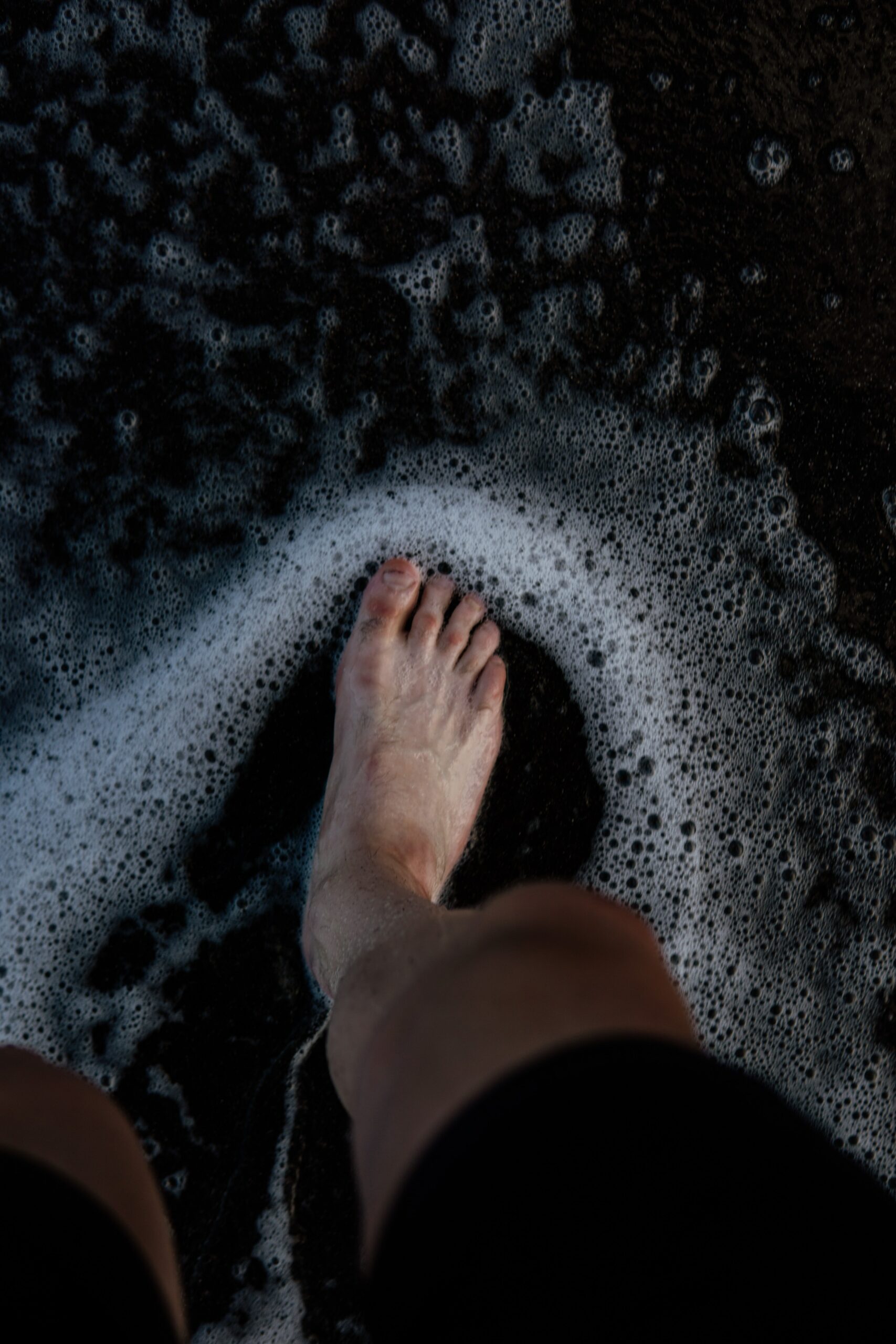Everything you need to know
During walking you put 1.5x your body weight in force through your foot. So it’s no mega surprise when you get an issue. We help people with foot issues all the time in clinic.
Most pains in the top of the foot are overuse, wear and tear or just poor footwear. And the good news is we can do something about all these issues.
Common causes for pain at the top of the foot
1. Stress Fractures
These are an overuse injury, when too much strain is going through the bone, so it’s breaking down quicker than it’s recovering and starts to crack. We see these all year round but definitely more at the tail end of winter. When there hasn’t been much sun in Glossop and peoples’ Vitamin D is low which protects bone health, and they’re doing a lot of activity and the bone is overloaded and can’t recover. It’s super important to catch these early when it’s a stable crack rather than broken into 2 segments.

- Extensor Tendonitis
The tendons that lift your foot and lift your toes up towards you, run along the top of your foot. This type of injury comes on slowly over time. It usually doesn’t stop you doing activity but aches after. It’s an overuse injury and once the tendons on top of your foot are sore, tight footwear that presses on them is like poking a bruise and it can really ache.

- Gout
Gout is quite common, and way more common in men than women, occurring at a 20:1 ratio. And in most cases people 40+. It typically presents as a flare up of foot pain in the big toe joint, that lasts about 7 days. After the flare up it goes into a period of remission.
It’s important to get this diagnosed early as gout is often a sign you have other conditions like kidney failure that may need checking ASAP. Treatment revolves around helping flare ups settle in a way that protects the joint. And limiting the flare ups long term.
Medications can help prevent flare ups, but diet plays a big role aswell in reducing the frequency of flare ups.
Diet tips –
- reducing alcohol consumption
- limiting purine-rich foods (meat, seafood, high fructose corn syrup, and sweetened soft drinks)
- Using full fat dairy products instead of low-fat ones.
- Weight loss and adequate hydration will also help reduce gout flare-up frequency.


- Athlete’s Foot
Athlete’s foot is not something we tend to see in clinic. It’s a fungal infection, and fungus loves damp humid conditions so it can thrive on a sweaty foot. Luckily most trainers and things are made of breathable fabrics.
Athlete’s foot causes white blisters between the toes, they can go a bit black over time. And if left untreated it can spread over the top of the foot.
Your pharmacist is your first port of call if you’ve got athlete’s foot, and they have effective creams and powders to resolve the issue. And it’s important to be aware it’s highly contagious so worth getting on top of as soon as possible.
- Nerve Pain
Nerves come out of your back and go all the way to your feet. If these get compressed anywhere even in your back your nerve can ache in your foot. A real tell tale sign you’ve got a nerve issue is when you’ve got any of the following:
- shooting pain along the top of the foot
- pins and needles
- numbness and/or foot weakness
We can assess the different nerves in clinic to find which one is causing you the issue and make a treatment plan from there.
- Arthritis
Arthritis is common in the foot and ankle; ankle arthritis can cause stiffness first thing in the morning or after rest and pain at the front of the ankle. Its very common if you’ve had some ankle injuries earlier in life that have damaged your ankle.
Even though the damage can’t be undone, the good news is that building up the coordination around the ankle and the strength around the ankle can help take the pressure off the joint and can make the symptoms settle so you get less pain and less stiffness, and you can do activities longer without getting pain form your ankle. Helping you keep healthy active and doing the things you enjoy.

General Do’s for pain at the top of your foot
Do’s
- Reduce activity a little to allow the pain to settle
- Ice the painful area for up to 10-15 minutes x3 daily
- Wear your footwear that feels the most comfortable to you, which is usually going to be a less tight shoe.
- Have your pain assessed to find out what’s wrong
- Get a treatment plan to get yourself back fit and able to do the activities you enjoy and keep yourself healthy, active, and feeling good.

